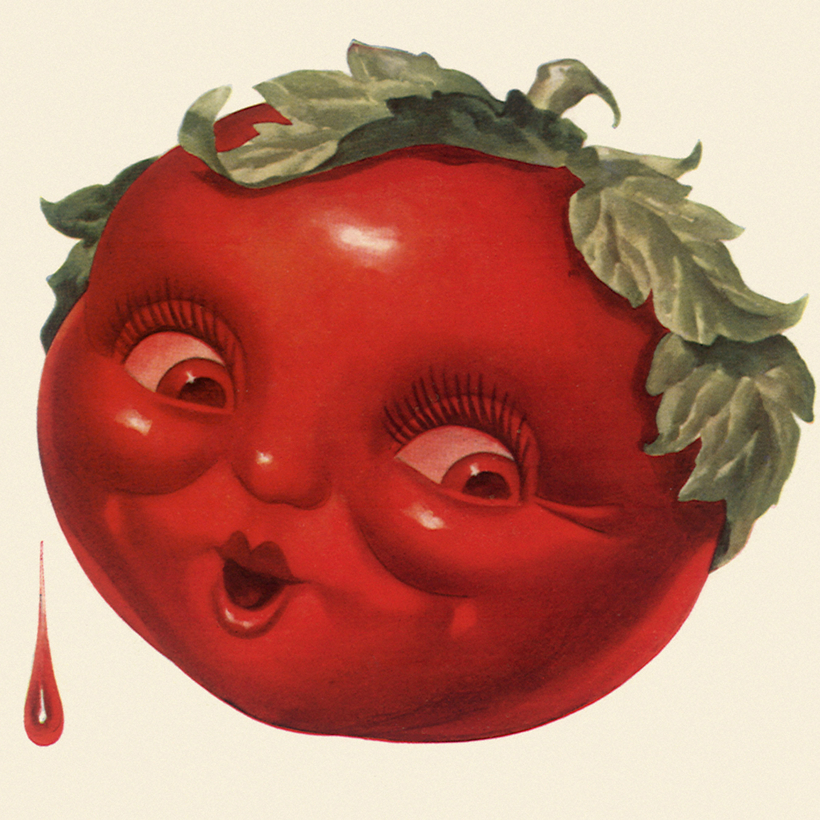Who could resist reviewing a book with a title like this? You don’t even have to like tomatoes (full disclosure: I do!) to wonder how someone could possibly find enough momentous material about a salad-bar staple to fill 300 pages. What’s next? How Bacon Bits Helped the Allies Win D-Day?
Scoff if you must about tomatoes, but then you would be missing out on one of the most delightful history books of the season. William Alexander, who appears to be a bit of a niche writer (his previous books include The $64 Tomato: How One Man Nearly Lost His Sanity, Spent a Fortune, and Endured an Existential Crisis in the Quest for the Perfect Garden), has done for his favorite subject what Edward Gibbon did for the Roman Empire. By the time you finish his book, you’ll marvel at how much he managed to squeeze into 300 pages.
The tomato’s march into becoming the world’s most popular vegetable began in the early 16th century, when Hernán Cortés laid waste to the Aztec empire and brought home to Europe a round vegetable, some red, some yellow, called xitomatl. And there, for many decades, hardly anyone used it for cooking, as the Aztecs did, but instead treated tomatoes as decorative plants. Alexander sums up the conventional wisdom: “They’re inedible when green, go from ripe to rotten in no time, fall apart when cooked, and have a consistency and flavor that resembled nothing in the European diet.”
The Spanish took to the tomato faster than the Italians did, perhaps because they knew how to eat it (not the leaves!) and overcame fears that they were poisonous. (Actually, the leaves can be, if eaten in large enough quantities.) But credit the Italians for realizing the tomato is in fact a fruit and not a vegetable, given it has seeds and is born from a flowering plant.
Alexander breezily sticks with calling it a vegetable since only botanists call it a fruit and, besides, in 1893 the U.S. Supreme Court declared its status as a vegetable for tariff purposes. He is more meticulous in describing how it was the tomato’s raging popularity in America in the 1800s (tomato wine!) and its alleged powers to cure various ills (tomato pills to wash down with that wine, anyone?) that caused Europeans, especially the Italians, to fully embrace what was once deemed dodgy.
William Alexander has done for his favorite subject what Edward Gibbon did for the Roman Empire.
Tomatoes, Alexander helpfully points out, are healthful, and lycopene, the antioxidant that gives tomatoes its red hue, may even help prevent cancer. But do not expect, as some thought back then, to beat cholera with a plate of heirlooms.
No part of the country benefited from the tomato as much as southern New Jersey, thanks to its soil and proximity to major cities. The product was especially adaptable to canning, due to its high acidity, a process that skyrocketed once the can opener was invented, in 1855 (yes, the can came before the opener), and could be used as provisions for troops during the Civil War. And of course then along came a man named Campbell, who sold his canning firm in New Jersey to a man whose nephew had this wacky idea for a condensed soup with a red-and-white label …
What’s next? How Bacon Bits Helped the Allies Win D-Day?
The writer is at his most captivating (and that is saying a lot, since there is not a boring moment in this book) when he launches his own mission to discover how Naples took some flatbread, cheese, and tomatoes and thus invented the world’s first global snack.
Will it surprise you to learn that on the other side of Vesuvius were rich tomato fields, now home to the San Marzano variety? And that Naples had many poor people who relied on cheap food that could be eaten quickly, perhaps without utensils? And that this all brings back memories of dorm life for the author? Alexander sprinkles charm on his anecdotes as easily as you might shake pepper flakes on a slice.
Not only is the tomato no longer misunderstood; it could be argued that it is now a little too understood, especially with the advent of ketchup and its ubiquitous use on pretty much anything by anyone. (Richard Nixon liked his cottage cheese with a few dabs of it, and what child has not doused a pricey steak with it?)
The book ends on a distressingly somber note, pointing out that the vagaries caused by climate change are driving the tomato further into hydroponic greenhouses that will ensure the supplies of our favorite vegetable never flag like those of, say, computer chips. Alas, the cost to the environment of growing tomatoes in Canada in the winter is far greater than that of growing them in the soil in Florida in the summer.
Alexander ponders all this and does exactly what the reader hopes he will: on an August afternoon, he takes an heirloom tomato, a variety known as accession LA0146, from his garden and makes B.L.T.’s for himself and his wife, Anne. “I swear I hear a soft moan escape from her after the first bite,” he writes. “We eat in silence, in reverence, in history.”

Jim Kelly is the Books Editor for AIR MAIL

